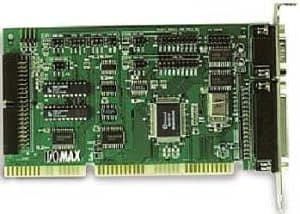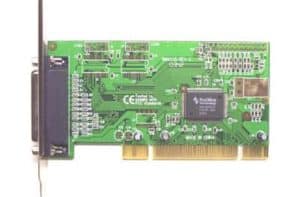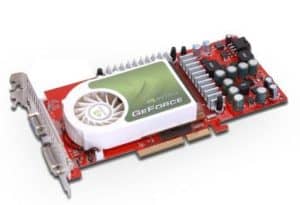Source by Wikipedia
A bus is a set of signal pathways that allow information to travel between components inside or outside of a computer.
Types of Bus
External bus or Expansion bus allows the CPU to talk to the other devices in the computer and vice versa. It is called that because it’s external to the CPU.
Address bus allows the CPU to talk to a device. It will select the particular memory address that the device is using and use the address bus to write to that particular address.
Data bus allows the device to send information back to the CPU
Types of Expansion Buses
ISA
Introduced by IBM, ISA orIndustry Standard Architecture was originally an 8-bit bus and later expanded to a 16-bit bus in 1984. When this bus was originally released it was a proprietary bus, which allowed only IBM to create peripherals and the actual interface. Later however in the early 1980’s, the bus was being created by other clone manufacturers.
16bit ISA Card
16bit ISA Slot
PCI
Introduced by Intel in 1992, PCI is short for Peripheral Component Interconnect and is a 32-bit or 64-bit expansion bus.
The PCI bus is the most popular expansion bus use in today’s computers.
PCI Card
PCI Slot
AGP
Introduced by Intel in 1997, AGP or Advanced Graphic Port is a 32-bit bus or 64-bit bus designed for the high demands of 3-D graphics. AGP has a direct line to the computers memory which allows 3-D elements to be stored in the system memory instead of the video memory.
AGP is one of the fastest expansion bus in use but it”s only for video or graphics environment.
AGP Card
AGP Slot

Expansion Bus Chart:
Type of Bus | Bits Wide | Clock Speed | Transfer Speed |
ISA | 8 bit | 4.77 MHz | 2.38MB/s |
ISA | 16 bit | 8.33 MHz | 8MB/s |
PCI (Client) | 64 bit | 66MHz | 266MB/s |
AGP 1x | 32 bit | 66MHz | 266MB/s |
AGP 2x | 32 bit | 66MHz | 533MB/s |
AGP 4x | 32 bit | 66MHz | 1,066MB/s |
AGP 8x | 32 bit | 66MHz | 2,133MB/s |
AGP 8x (high-end) | 64 bit | 66MHz | 4,266MB/s |
Want more information on how to become CompTIA A+ Certified? Learn more!
Also published on Medium.







